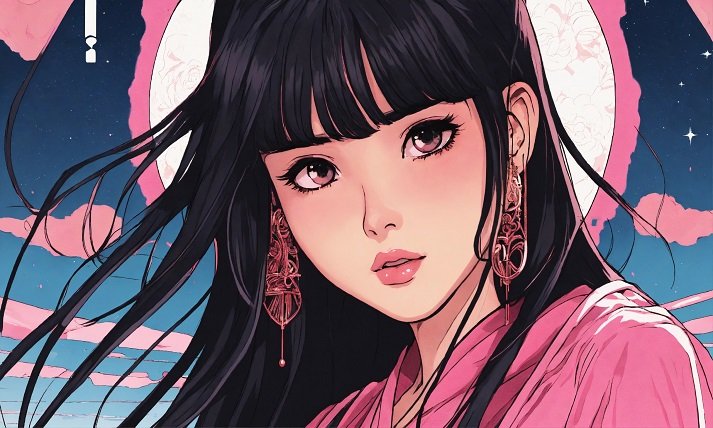Introduction
Animation is a broad genre with a wide range of styles, influences, and genres. Chinese anime is a new contender in the East’s anime business, which has been dominated by Japanese anime for decades. Chinese animation, often known as “donghua,” is becoming more and more popular due to its distinctive storytelling, striking graphics, and cultural relevance. We go into the world of Chinese anime in this in-depth examination, revealing its origins, development, famous works, and influence on the worldwide animation industry.
Origins of Chinese Anime: Tracing the Roots
Chinese animation has a long history dating back several centuries, and it takes its cues from classical arts like Chinese opera, shadow puppetry, and scroll painting. These early inspirations served as a springboard for China’s current animation industry. China’s earliest animated films were made in the early 20th century thanks to pioneers like Wan Laiming and the Wan brothers, who brought animation to the nation. Notwithstanding obstacles including unstable political environments and scarce resources, these pioneers cleared the path for the development of Chinese animation.
Evolution of Chinese Anime: From Imitation to Innovation
The development of Chinese anime follows the same trend as China’s rise to prominence in the world economy. Chinese animation saw a resurgence with the introduction of digital technology in the late 20th century, utilizing cutting-edge methods to create technically and aesthetically spectacular works. Early Chinese animation frequently copied the visual languages of Western and Japanese animation, but modern donghua has developed its own character by fusing Eastern and Western aesthetics.
Notable Chinese Anime Studios and Creators
The groundbreaking work of companies like Tencent Animation & Comics, Haoliners Animation League, and Samsara Animation Studio is largely responsible for the success of Chinese anime. These companies have demonstrated the depth and breadth of Chinese animation ability by producing a wide range of content, from highly acclaimed shows to blockbuster features. Visionary filmmakers who have pushed the limits of storytelling and animation, including Shi Siye, the director of “The Legend of Hei,” and Lin Hun, the creator of “The King’s Avatar,” have won awards both domestically and internationally.
Popular Chinese Anime Series and Films
With the popularity of shows like “The King’s Avatar,” an exciting esports drama set in the world of online gaming, and “Mo Dao Zu Shi,” a supernatural fantasy epic based on a well-liked web novel, Chinese anime has recently acquired notoriety on a global scale. Other noteworthy works include the artistically gorgeous fantasy adventure “The Legend of Hei” and the humorous action series “Scissor Seven,” which has a distinct artistic style. These shows, which captivate viewers with their intriguing stories and eye-catching graphics, are prime examples of the range and inventiveness of Chinese animation.
Influence of Chinese Culture on Anime
Chinese anime is deeply influenced by Chinese culture in many facets, from its themes and motifs to its visual aesthetic and narrative approaches. Chinese animation tackles the ageless themes of honor, responsibility, and destiny by drawing on a rich legacy of mythology, folklore, and martial arts. Chinese anime, whether it is set in modern times or ancient China, captures the ideals and customs of Chinese culture and gives viewers a glimpse into the heart of the country.
Challenges and Opportunities in the Global Market
Despite its recent explosive expansion, Chinese animation still confronts a number of obstacles in the international market. Chinese anime faces many challenges, including rivalry from well-established players like Japan, linguistic limitations, and cultural divides. However, Chinese anime also offers special chances for growth and creativity in light of the emergence of streaming services and the rising demand for a variety of material. Chinese animation can establish a name for itself in the worldwide animation market by leveraging its rich cultural legacy and welcoming cross-border cooperation.
Future Trends and Innovations in Chinese Animation
Chinese animation has a bright future ahead of it thanks to developing technology, inventive creativity, and growing cross-border cooperation. Chinese animators are pushing the limits of storytelling and immersion by experimenting with new media including virtual reality, augmented reality, and artificial intelligence as technology continues to advance. Chinese animation is positioned to have even more of an influence on the global scene by adopting these advancements while remaining loyal to its cultural heritage.
Conclusion
As our exploration of the Chinese anime industry comes to an end, it is clear that there is a lot of untapped potential in this dynamic and rapidly developing field. Chinese animation, with its rich storytelling, stunning visuals, and cultural depth, has captivated audiences from its modest beginnings to its current global effect. With the support of innovation, originality, and an expanding global fan base, Chinese anime has a bright future despite obstacles like competition and restriction.
FAQ
Is Chinese anime the same as Japanese anime?
Although the animation style and narrative of Chinese and Japanese anime are comparable, they also have unique qualities that are ingrained in their own cultures.
How can I watch Chinese anime with English subtitles?
English-subtitled versions of numerous Chinese anime TV shows and movies can be found on streaming services like Funimation, Crunchyroll, and Netflix.
What are some recommendations for beginners interested in exploring Chinese anime?
“Mo Dao Zu Shi,” “The Legend of Hei,” and “The King’s Avatar” are a few well-liked Chinese anime programs to start with.


